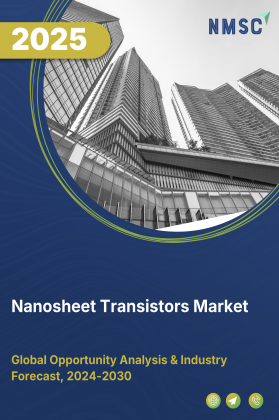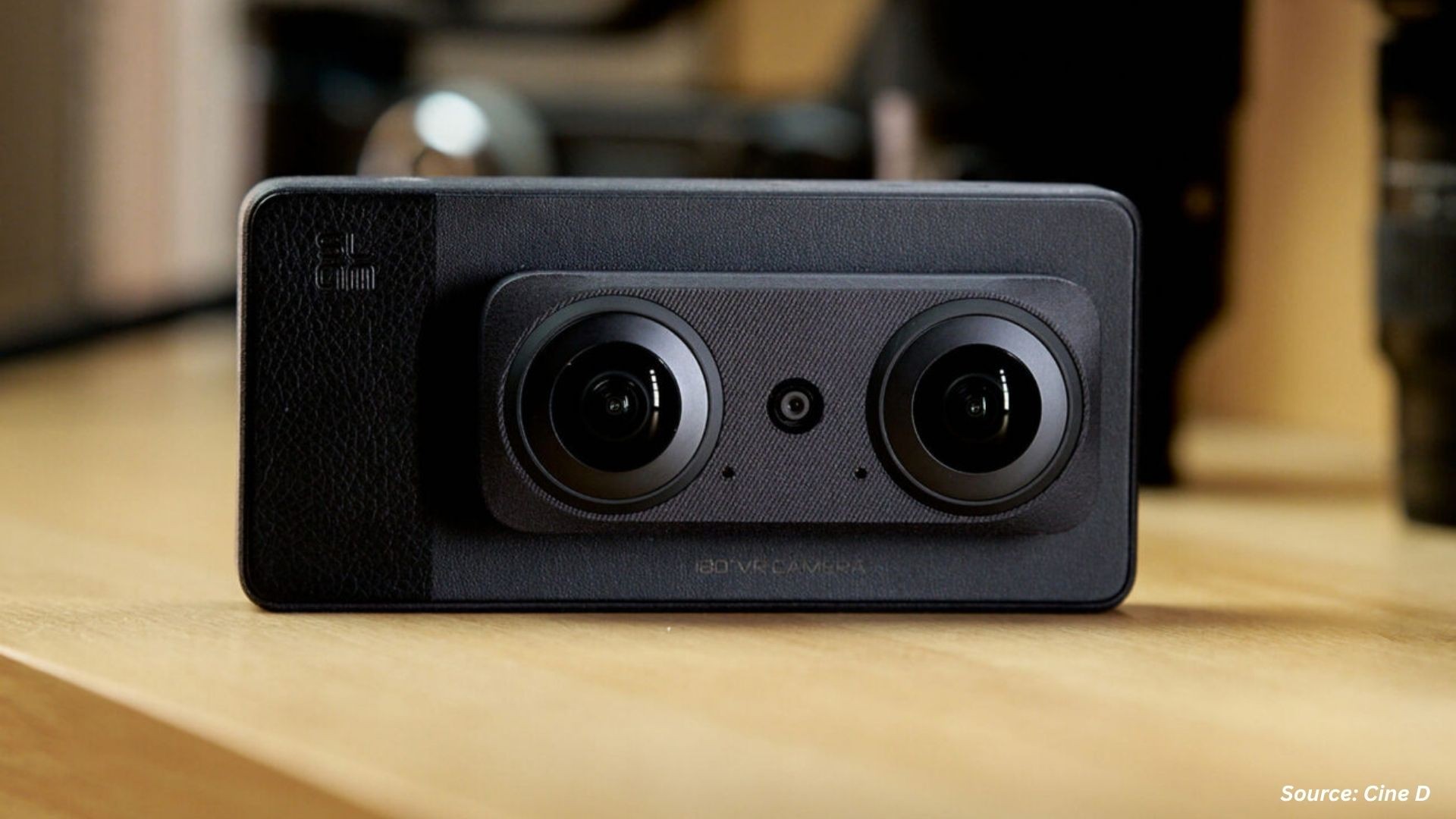Eye Tracking Market by Type (Head Mounted Eye Tracker and Remote Eye Tracker), by Component (Hardware and Software), by Application (Assistive Communication, Academic Research, Consumer Behavior Research, Usability Testing, and Others), and by End User (Retail, Automotive, Healthcare, Government, and Others) – Global Opportunity Analysis and Industry Forecast, 2024–2030
Industry: Semiconductor & Electronics | Publish Date: 28-Nov-2024 | No of Pages: 220 | No. of Tables: 172 | No. of Figures: 135 | Format: PDF | Report Code : SE80
Market Definition
The global Eye Tracking Market size was valued at USD 913.6 million in 2023, and is predicted to reach USD 4909.7 million by 2030, with a CAGR of 26.0% from 2024 to 2030. Eye tracking, also known as gaze tracking is a sophisticated technology that measures and analyzes the movements, gaze direction, and fixation points of a person's eyes. This technology enables a comprehensive understanding of where a person's attention is directed and how their eyes move while observing their surroundings or engaging with visual stimuli. Researchers and professionals utilize this technology to glean insights into diverse aspects of human behavior, cognition, and visual perception.
The applications of eye tracking span across different fields, such as psychology, market research, user experience testing, and human-computer interaction. In psychology, it aids in comprehending how individuals process visual information, make decisions, and respond to stimuli. Market researchers employ it to evaluate consumer preferences, discerning which aspects of advertisements or products garner the most attention. In user experience and human-computer interaction, eye tracking furnishes valuable insights into how users interact with digital interfaces and websites, leading to design enhancements for improved usability.
By offering a meticulous and impartial analysis of visual attention, eye tracking stands as a pivotal tool for gaining profound insights into human visual behavior across various contexts. It has become an indispensable technology for researchers, designers, and professionals striving to refine their products, services, and user experiences.
Growing Advertisement and Consumer Research Boost the Market Growth
The retail industry, especially the fast-moving consumer goods (FMCG) sector, increasingly uses eye-tracking technology to boost sales revenue. Eye-tracking devices track where consumers look, and algorithms use this data to decipher consumer behavior in retail settings. This information reveals valuable insights, such as how long consumers look at products, which product placements lead to purchases, and which packaging designs effectively convey product information. Eye-tracking technology is also used in web marketing to analyze and evaluate ads in various formats, including print, signage, and digital.
In September 2023, Affectiva, a subsidiary of Smart Eye AB, introduced a new attention metric in its cloud-based Emotion AI offering. This new metric combines Smart Eye's precise eye tracking capabilities with Affectiva's Emotion AI to provide more nuanced insights into human behavior. This development can potentially revolutionize viewer attention measurement for brands, advertisers, entertainment companies, and market researchers. It will provide comprehensive and accurate data on human attention and emotions, which can be used to make advertising campaigns, content, and products more engaging and effective.
Rapid Integration of Eye Tracking in the Automotive Sector to Promote Safety & Comfort
The growing concern over rising traffic accidents drives the adoption of eye tracking technology in the automotive sector. This technology monitors driver gaze and assesses behavior to improve safety. It provides real-time insights into the driver's field of vision, leading to better driving experiences for increased comfort and safety. Eye tracking technology has significant potential in the automotive sector. It offers a live view of driver attention, identifies potentially distracting interface elements, and informs the redesign of principles for safer and more efficient vehicles than before.
In 2023, Tobii partnered with Automotive Motion Lab for a research initiative aimed at detecting driver drowsiness without the need for cameras, thus advancing the applications of eye tracking technology in the automotive industry. This breakthrough significantly enhances driver safety, and is relevant to the growing eye tracking market.
Emergence of New Eye Tracking Alternatives Hampers the Market Growth
The emergence of alternative technologies such as gesture recognition, unimodal methods, and multimodal activity recognition restrains the eye tracking market growth. Gesture recognition, for instance, deciphers human gestures through sophisticated algorithms, allowing for device control through simple movements. This technology identifies emotions conveyed through facial, hand, and body gestures. Particularly in sectors such as consumer electronics and gaming, where understanding user behavior is paramount, these alternative technologies offer insights that extend beyond the scope of eye tracking. This factor, in turn, restrains the market expansion.
Expansion of Eye Tracking Technology into New Applications Presents Growth Opportunities for the Industry
The rapid expansion of eye tracking technology across various applications, including augmented reality (AR), virtual reality (VR), lie-detection systems, and cognitive testing, presents substantial growth opportunities for the eye tracking market. In AR and VR, eye trackers not only enhance visual quality but also reduce eye strain, leading to a more immersive user experience. Additionally, they provide invaluable insights into user interactions with their surroundings. In AR, eye tracking enables interactions to respond to a user's gaze. In contrast, VR complements motion tracking for a comprehensive understanding of where users focus in 3D space. This technology benefits from natural stimuli and precise data collection, driving a dynamic field supported by startups and investments from industry giants, such as Apple, Google, Facebook, and Samsung.
In March 2022, Mojo Vision unveiled an advanced prototype of its AR smart contact lens, Mojo Lens, featuring new hardware elements and cutting-edge technologies, such as advanced display, communications, eye tracking technology, and an embedded power system. This innovation empowers users to access timely information quickly and discreetly without diverting their gaze to a screen.
Asia-Pacific Dominates the Eye Tracking Industry
In the Asia-Pacific region, the eye tracking market is driven by distinct factors. China's thriving gaming industry, with over 666 million gamers, fuels the integration of eye tracking for more immersive gameplay. India's rapid adoption of consumer electronics, supported by government initiatives such as 'Make in India' and 'Digital India,' propels the market. South Korea's gaming culture and advanced Driver Monitoring System (DMS) technology in automobiles are key drivers. In Japan, eye tracking is pivotal in medical research and cognitive studies. Australia's focus on elderly care with a rising prevalence of dementia accelerates the demand. Additionally, the military's adoption of eye tracking boosts the market. In Vietnam and the Philippines, the increasing use of eye tracking in healthcare, research, academia, and gaming drives the market growth.
North America to Witness a Substantial Growth in the Market
In North America, the U.S. dominates the eye tracking market, driven by its widespread use in the IT and healthcare sectors. Notably, Amazon's "Eye Gaze" feature for Alexa and Onyx Healthcare's telemedicine device with eye-tracking technology has revolutionized accessibility. The automotive industry's adoption of eye tracking, exemplified by Smart Eye's partnership with a global Tier 1 supplier, further propels the market growth.
In Canada, investments in smart and wearable technology, coupled with the demand for assistive communication devices, contribute to its position as the second-largest market in North America. Additionally, the growth of eye tracking in applications such as lie-detection systems, gaming, and cognitive testing along with its use in healthcare drive the market expansion. The presence of leading eye tracking software companies such as Expoze Io and iMotions amplifies the growth.
Mexico's eye tracking industry is rising, due to its increased adoption in gaming, AR, and VR applications. The retail sector's demand for eye-tracking technology further fuels the growth, as does its application in healthcare and research. Mexico's thriving vehicle modification also boosts the automotive market, and subsequently, the eye tracking market. For example, Smart Eye's AIS system, equipped with comprehensive driver monitoring features, exemplifies this growth.
Competitive Landscape
Various market players operating in the eye tracking industry include Tobii AB, Smart Eye AB, Lattice Semiconductor Corp., Ogilvy, Seeing Machines Ltd., AVSimulation, Lumen, Eyetech Digital Systems, Inc., EyeTracking, Gazepoint, Eyegaze, Eyeware Tech, SR Research Ltd., Pupil Labs, Irisbond Crowdbonding, S.L., and others. These market players are adopting strategies such as collaboration, product launches, and innovation across various regions to maintain their dominance in the global market.
For instance, in October 2023, Tobii launched UX Explore, a new cloud platform that makes eye-tracking-based mobile UX research more affordable and accessible than before to designers and developers. It gives researchers a first-person view of user attention, enabling them to quickly and easily gain insights into user behavior.
Also, in October 2023, Smart Eye launched a new driver monitoring system called AIS CV Alert to help bus and truck manufacturers quickly and easily add drowsiness detection to their vehicles. AIS CV Alert is an easy-to-use hardware and software solution that requires no special expertise or resources to install.
Moreover, in August 2023, Reyedar partnered with Pupil Labs to integrate modern eye-tracking and AI technologies to detect early-stage Glaucoma. This eye condition causes optic nerve deterioration and vision blind spots. The program provides financial support to enhance analytics and offers career opportunities in data science, engineering, and technology.
In June 2023, Seeing Machines partnered with Devant, a Swedish startup that creates realistic digital humans for training, testing, and validating machine learning networks, such as those used in driver monitoring systems. Synthetic data reduces the cost of data collection and labeling, providing a complete solution for driver monitoring and in-cabin sensing.
Furthermore, in May 2023, Eyegaze upgraded its Encore camera and Bluetooth keyboard. The new camera connection removes the need for a USB hub, enhancing convenience with an available USB port on the Eyegaze Edge tablet. The rechargeable Bluetooth keyboard, now dongle-free, makes the device lighter and more efficient for eye tracking than before.
Key Segments
By Type
-
Head Mounted Eye Tracker
-
Remote Eye Tracker
By Component
-
Hardware
-
Software
By Application
-
Assistive Communication
-
Academic Research
-
Consumer Behavior Research
-
Usability Testing
-
Others
By End User
-
Retail
-
Automotive
-
Healthcare
-
Government
-
Others
By Region
-
North America
-
The U.S.
-
Canada
-
Mexico
-
-
Europe
-
The UK
-
Germany
-
France
-
Italy
-
Denmark
-
Netherlands
-
Finland
-
Sweden
-
Norway
-
Rest of Europe
-
-
Asia-Pacific
-
China
-
Japan
-
India
-
South Korea
-
Australia
-
Indonesia
-
Singapore
-
Taiwan
-
Thailand
-
Vietnam
-
Rest of APAC
-
-
Rest of World (RoW)
-
Latin America
-
Middle East
-
Africa
-
Key Players
-
Tobii AB
-
Smart Eye AB
-
Lattice Semiconductor Corp
-
Ogilvy
-
Seeing Machines Limited
-
AVSimulation
-
Lumen
-
Eyetech Digital Systems, Inc.
-
EyeTracking
-
Gazepoint
-
Eyegaze
-
Eyeware Tech
-
SR Research Ltd.
-
Pupil Labs
-
Irisbond Crowdbonding, S.L.
Report Scope and Segmentation
|
Parameters |
Details |
|
Market Size in 2023 |
USD 913.6 Million |
|
Revenue Forecast in 2030 |
USD 4909.7 Million |
|
Growth Rate |
CAGR of 26.0% from 2024 to 2030 |
|
Analysis Period |
2023–2030 |
|
Base Year Considered |
2023 |
|
Forecast Period |
2024–2030 |
|
Market Size Estimation |
Million (USD) |
|
Growth Factors |
Growing advertisement and consumer research Rapid integration of eye tracking in the automotive sector to promote safety & comfort |
|
Countries Covered |
27 |
|
Companies Profiled |
15 |
|
Market Share |
Available for 10 companies |
|
Customization Scope |
Free customization (equivalent up to 80 working hours of analysts) after purchase. Addition or alteration to country, regional, and segment scope. |
|
Pricing and Purchase Options |
Avail customized purchase options to meet your exact research needs. |

















 Speak to Our Analyst
Speak to Our Analyst

























